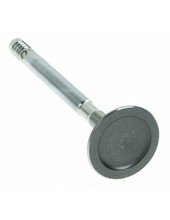moper
Well-Known Member
Well, you should see my customer list then of Pro's who buy my product to do valve jobs on a vertical mill because they are tired of fighting the specialized machine that can't do the job as well.
And I have customers doing 5mm stem 4 valve heads that way, and customers doing Pro Stock Harley heads with 2.30"+ valves that way.
Pretty sure I'm not confused about that....
One of my old instructors still uses his Qwik Way that's almost as old as I am. He does decent work with it and always has. A friend's father does his work on a Bridgeport too. I've run his work before. But I feel a professional shop that is well appointed with top of the line equipment to do all the operations in house, and staffed with professionals who don't struggle with running it is where I'd spend my money. The good seat and guide machines are just well optioned mills anyway but they are designed for quality head work. If a machinist couldn't use them for that I'd be concerned about paying them for anything. The TCM I bought was being used for helicoils and basic guide/spring seat cutting because the Serdi replaced it and was far superior in every way. I can see the cost factor too tho - the TCM was $3500 with probably that much alone in tooling and pilots. The Serdi was $27K with pilots and tooling and it was 4 yrs old at the time.


















